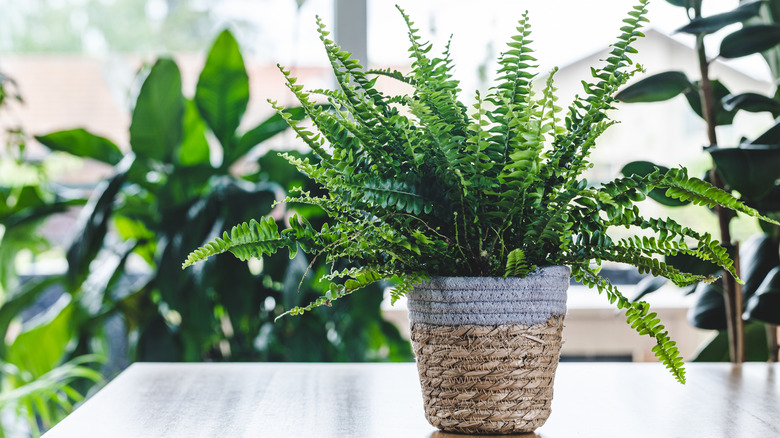Do Boston Ferns Really Help Decrease Mold In Your Home?
Boston ferns are a popular choice for adding a touch of nature to your home with their lush green foliage. Beyond aesthetics, many people swear by them to help decrease mold in your living space while enhancing air quality. There is a unique relationship between Boston ferns and mold that enables these beautiful plants to contribute to a healthier indoor environment. Ferns love humidity, a quality that mold also thrives in. By absorbing excess moisture from the air, Boston ferns can indirectly prevent mold growth by keeping humidity levels within a healthy range.
Boston ferns excel at regulating humidity. The primary reason this houseplant can keep your house mold-free is its ability to absorb humidity and moisture in the air. When Boston ferns absorb moisture from their surrounding environment, they create a more balanced humidity level. This is crucial because mold thrives in damp, humid conditions. By maintaining an optimal humidity level indoors, Boston ferns can prevent mold by creating an unfavorable environment for it to grow. This is especially useful in areas like bathrooms or kitchens, where moisture tends to linger and favor mold development.
Boston ferns also help purify the air
Beyond the Boston fern's humidity-regulating abilities, they also have pollutant-filtering properties. You can actually improve your indoor air naturally with a Boston fern. These elegant plants do so much more than add greenery to your home. They act as natural air purifiers and work to release oxygen and absorb carbon dioxide during the process of photosynthesis.
However, their benefits extend beyond oxygen production. They have a natural ability to absorb and filter pollutants from the air. Boston ferns effectively filter common household pollutants like toluene, formaldehyde, and xylene, which are often found in furniture, cleaning products, and even building materials. Formaldehyde can be emitted from gas stoves and heaters. Xylene is found in markers and paint thinners and toluene often makes up various types of plastics. Reducing these pollutants helps to improve overall indoor air quality, providing a cleaner and healthier home environment, and potentially preventing mold growth.
Tips for keeping Boston ferns as houseplants
If you're interested in harnessing the mold-reducing power of these plants, there are some things you should know before planting Boston ferns. The first thing you want to do is choose the right location. Boston ferns thrive in bright, indirect sunlight. Place your fern near a window with filtered light to ensure it receives the appropriate amount of sunlight without being exposed to harsh, direct rays.
To help your Boston fern regulate humidity levels, consider placing it in a humid room or a bathroom, where steam from showers creates a more humid environment. Be sure to water your fern regularly. Keep the soil consistently moist but not waterlogged to ensure your fern stays healthy and continues to release moisture into the air. Regularly trim any dead or yellowing fronds and clean the leaves with a damp cloth to remove dust and debris, which can inhibit the plant's ability to absorb and release moisture.


